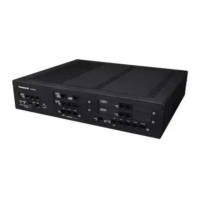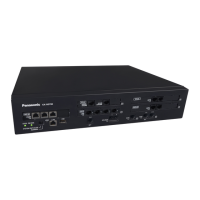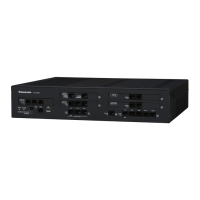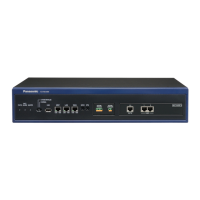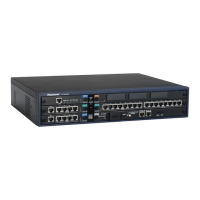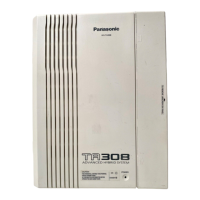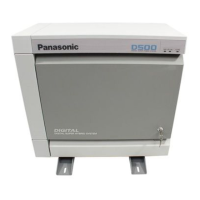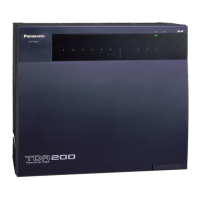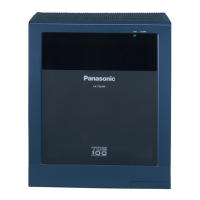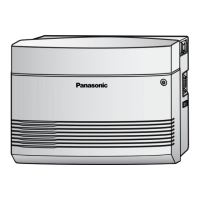5.2.2.3 Simple Remote Connection
Description
Using the Built-in Media Relay Gateway
Using the Built-in Media Relay Gateway feature, KX-NT500 series IP-PTs, Panasonic IP-Softphones, and
KX-NS0154 IP-CSs can be connected to a remote location without an additional device, such as an SBC
(Session Border Controller). These devices can be registered to the remote location after configuring the
Built-in Media Relay Gateway. KX-UT series SIP phones and general SIP phones can also be installed to the
remote location easily. KX-UT series SIP phones and general SIP phones can be connected to the Built-in
Media Relay Gateway by following the method for using an SBC.
Note
• Peer-to-peer communication is not supported for the built
-in media relay gateway.
Using an SBC (Session Border Controller)
KX-UT SIP phones and general SIP phones support simple remote connectivity when the PBX is networked
with an SBC (session border controller). Simple remote connectivity means that even if the SIP phone is located
behind a NAT router, firewall, or both, specialised settings such as NAT traversal settings do not need to be
configured for each remote extension.
There are 2 scenarios for configuring and connecting a SIP phone:
a. The SIP phone is connected and registered to the PBX on the PBX’s local network. The necessary settings
are configured automatically by the PBX.
b. The remote IP settings of the SIP phone are configured without first connecting the phone to the PBX.
Once programmed, the SIP phone is sent to the remote location, connected to the network and will
automatically connect to the PBX.
Conditions
• Extensions that will be configured remotely use HTTPS for transferring the configuration file. However, a
maximum of 20 extensions per site can be connected in this way.
• The following types of settings must be configured on the PBX:
– The remote setting for the SIP phone’s port
– The outside-facing IP address and port of the PBX-side network gateway
– The necessary NAT traversal settings for the NAT device
• The following types of setting must be configured on the PBX-side network gateway:
When using an SBC (Session Border Controller)
– Static port forwarding settings for traversing the SBC (SIP, TR-069, RTP, and NTP)
When using the built-in Media Relay Gateway
– Static port forwarding settings for traversing the built-in Media Relay Gateway (SIP, TR-069, RTP, NTP,
PTAP, MGCP, and FTP)
• General SIP phones must support early media.
• SIP-CSs and S-PSs do not support this feature.
Installation Manual References
5.8.3 Installing SIP Phones at a Remote Site
5.8.4 Installing IP Phones at a Remote Site with a Built-in Media Relay Gateway
Feature Guide 493
5.2.2 SIP (Session Initiation Protocol) Extension
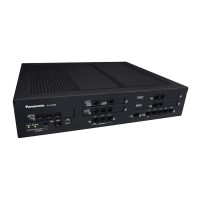
